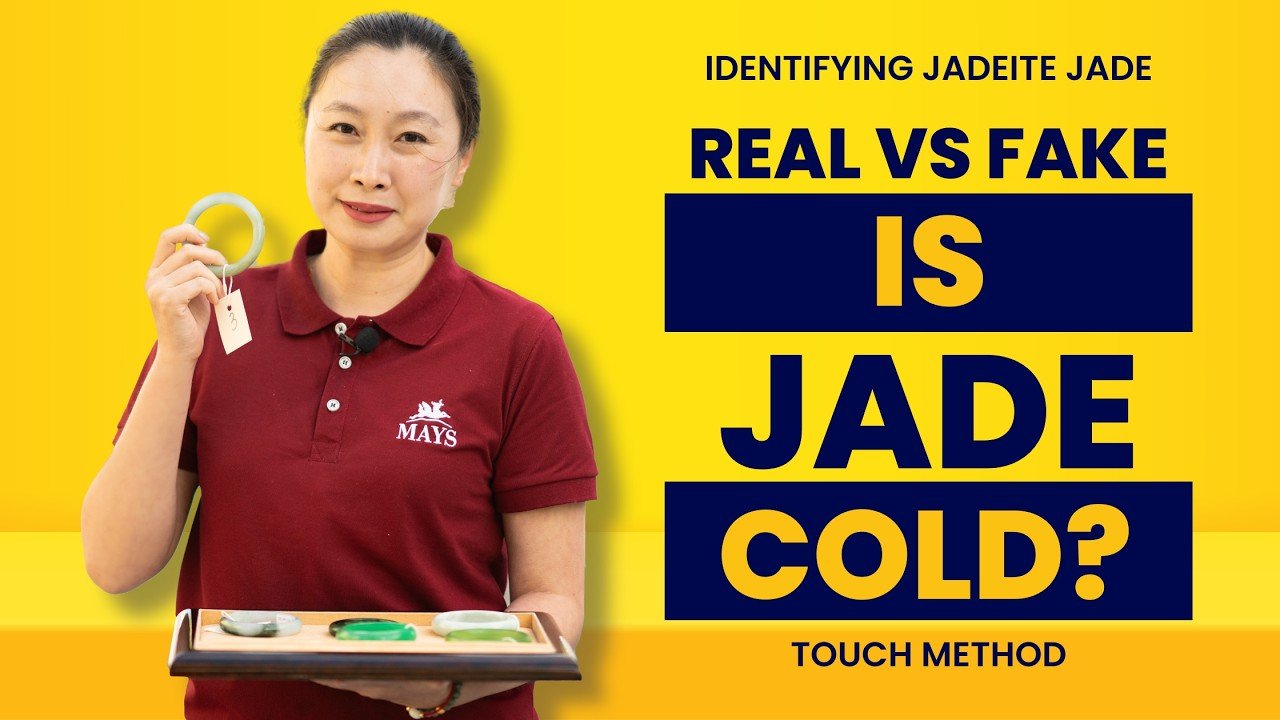Identifying real jade can be tricky, especially with the common misconception that genuine jade always feels cold to the touch. In a recent experiment by Cathy from MAYGEMS, participants attempted to distinguish real jade from fakes based on this belief, revealing surprising results about jade’s thermal properties.
#jade #jadebangle #jewelry #fashion #jewellery #handmade #earrings #accessories #necklace #Jade #handmadejewelry #style #jewelrydesigner #jewelryaddict #ring #bracelet #jewelrydesign #jewels #rings #bracelets #diamonds #design #diamond #beautiful #art #instajewelry #gemstones #luxury #jewelrygram #gemstonejewelry #bangles
Identifying real jade by its coldness is a traditional method often used by amateurs. Genuine jade, whether jadeite or nephrite, has a unique thermal property: it feels cool to the touch, even in warm conditions. When you pick up a piece of real jade, it should impart a noticeable chill to your skin, which lasts longer than with most other stones. This cool sensation occurs because jade conducts heat away from your body more efficiently than imitation materials.
To learn more about Jade Bangles
https://mays.us/collections/jade-bangles
The video revolves around an experiment with the public where randomly chosen participants attempt to identify real jade from fake ones based on the common belief that real jade feels cold to the touch. Cathy from MAYGEMS conducts the experiment using six bangles, only one of which is genuine jade. Participants were blindfolded first and asked to feel each bangle on their cheeks to determine which one is real, with varying degrees of success. The second test allows the participants to remove the blindfold and test the bangles both with feeling its coldness and also visually as well.
The six sample bangles were: Sample number three was identified as real jadeite from Burma. Samples one and two were glass and treated jade (grade B plus C Jade) respectively. Quartzite (Guizhou Jade), Agate, and another treated sample similar to Quartzite were also included in the experiment.
Participants’ belief that real jade must feel cold to the touch was challenged by the varying temperatures felt during the experiment. A total of 15 participants took part in the experiment and approximately 40% of participants incorrectly identified treated jade and another 40% of the participants incorrectly identified Quartzite as real jade based on the coldness misconception. The experiment shows that identifying jade based on coldness alone is insufficient and inaccurate.
To watch more great videos
https://www.youtube.com/@maysgems
Gemology, jewelry, gemstone and jade education









